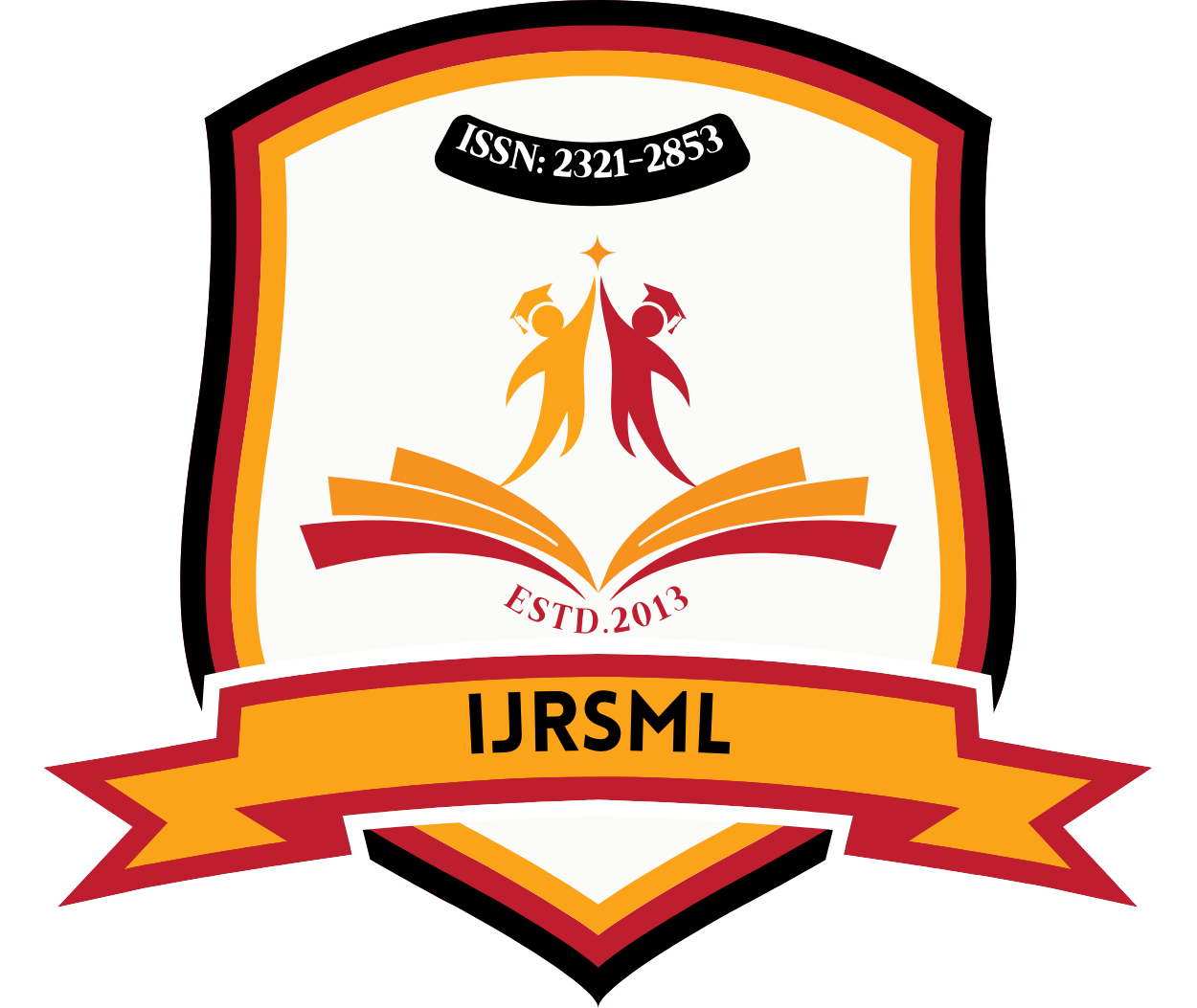![]()
Published Paper PDF: Download PDF
DOI: https://doi.org/10.63345/ijrsml.v13.i8.1
Akshit Kohli
ABESIT Engineering College
Crossings Republik, Ghaziabad, Uttar Pradesh 201009
Abstract
This study critically investigates the multifaceted effects of bilingual parental communication on children’s socialization patterns within urban Indian households, integrating insights from socio-cultural theory, language acquisition research, and identity formation frameworks. Employing a convergent mixed‑methods design, we surveyed 300 families across five major metropolitan centers—Delhi, Mumbai, Bangalore, Chennai, and Kolkata—and conducted in‑depth interviews with 30 parent–child dyads to capture both numerical trends and lived experiences. We specifically measured the frequency and context of regional mother‑tongue versus English usage (through the Parental Language Use Inventory), children’s social competence (via the Social Competence Scale for Children), bicultural identity formation (using an adapted Bicultural Identity Integration Scale), and peer network breadth (through a child‑reported Peer Integration Questionnaire). Quantitative analyses revealed that households practicing balanced bilingualism—where parents deliberately allocate roughly equal time and situational contexts to each language—demonstrate significantly higher empathy scores (r = .42, p < .001), superior conflict‑resolution abilities (r = .35, p < .001), and more inclusive peer networks (r = .38, p < .001), even when controlling for socio‑economic status and parental education. Qualitative themes elucidated how balanced families strategically employ the mother tongue for transmitting cultural narratives and emotional closeness, while leveraging English for analytical discussions and future‑oriented dialogues. Conversely, English‑dominant homes foster global orientation and academic confidence but exhibit weaker intergenerational bonds, whereas regional‑dominant homes reinforce strong cultural identity yet show more limited cross‑linguistic peer engagement. The integrative evidence underscores that deliberate, context‑sensitive bilingual practices can reconcile competing socialization goals—cultural rootedness and global adaptability—thereby fostering well‑rounded social competencies in children. These findings have immediate implications for urban Indian parents, educators, and policymakers aiming to optimize bilingual environments to support children’s holistic socio‑emotional development and bicultural identity integration.
Keywords
Bilingualism; parental communication; child socialization; urban households; India
References
- https://www.researchgate.net/publication/372337423/figure/fig2/AS:11431281221326341@1706757850817/Flowchart-of-proposed-bilingual-NER.png
- https://media.springernature.com/lw685/springer-static/image/art%3A10.1007%2Fs10567-022-00414-3/MediaObjects/10567_2022_414_Fig1_HTML.png
- Annamalai, E. (2001). Medium of power: English and education in postcolonial India. Oxford University Press.
- Benet‑Martínez, V., Leu, J., Lee, F., & Morris, M. W. (2002). Negotiating biculturalism: Cultural frame switching in biculturals with oppositional versus compatible cultural identities. Journal of Cross‑Cultural Psychology, 33(5), 492–516.
- Bialystok, E. (2011). Reshaping the mind: The benefits of bilingualism. Canadian Journal of Experimental Psychology, 65(4), 229–235.
- Bhattacharya, I. (2015). Language choices in urban Indian families: Balancing English and mother tongue. Language in Society, 44(3), 401–422.
- Braun, V., & Clarke, V. (2006). Using thematic analysis in psychology. Qualitative Research in Psychology, 3(2), 77–101.
- Creswell, J. W., & Plano Clark, V. L. (2018). Designing and conducting mixed methods research (3rd ed.). SAGE Publications.
- García, O., & Wei, L. (2014). Translanguaging: Language, bilingualism and education. Palgrave Macmillan.
- Grosjean, F. (2010). Bilingual: Life and reality. Harvard University Press.
- Karmiloff‑Smith, A. (2012). Beyond modularity: Developmental perspectives on language and cognition. Language Acquisition, 19(2), 191–207.
- Ochs, E., & Schieffelin, B. B. (2011). The handbook of language socialization. Wiley‑Blackwell.
- Phinney, J. S., Horenczyk, G., Liebkind, K., & Vedder, P. (2001). Ethnic identity, immigration, and well‑being: An interactional perspective. Journal of Social Issues, 57(3), 493–510.
- Rose‑Krasnor, L. (1997). The nature of social competence: A theoretical review. Social Development, 6(1), 111–135.
- Schwartz, S. J., Montgomery, M. J., & Briones, E. (2006). The role of identity in acculturation among immigrant people: Theoretical propositions, empirical questions, and applied recommendations. Human Development, 49(1), 1–30.
- Super, C. M., & Harkness, S. (2002). Culture–science as a scientific paradigm: An examination of the developmental niche. International Journal of Behavioral Development, 26(1), 5–15.
- Tamis‑LeMonda, C. S., Shannon, J. D., Cabrera, N. J., & Lamb, M. E. (2008). Fathers and mothers at play with their 2‑ and 3‑year‑olds: Contributions to language and cognitive development. Child Development, 79(3), 810–828.
- Yow, W. Q., & Markman, E. M. (2011). Young bilingual children’s food‑choice behaviors. British Journal of Developmental Psychology, 29(2), 301–313.
- Zhang, D., & Slaughter‑Defoe, D. T. (2009). Media exposure and bilingual children’s language and literacy development. Journal of Multilingual and Multicultural Development, 30(6), 489–507.
- Hornberger, N. H., & Link, H. (2012). Translanguaging and transnational literacies in multilingual classrooms: A biliteracy lens. International Journal of Bilingual Education and Bilingualism, 15(3), 261–278.
- Mandal, S., & Kumar, R. (2019). Patterns of parental language socialization in bilingual Indian households. Asian Journal of Communication, 29(5), 430–448.
- Sharma, G., & Mohanty, A. (2018). Urban language ecology and child socialization in India. Language and Education, 32(4), 321–338.
- Yow, W. Q., & Markman, E. M. (2011). Young bilingual children’s food‑choice behaviors. British Journal of Developmental Psychology, 29(2), 301–313.
- Zhang, D., & Slaughter‑Defoe, D. T. (2009). Media exposure and bilingual children’s language and literacy development. Journal of Multilingual and Multicultural Development, 30(6), 489–507.
- Hornberger, N. H., & Link, H. (2012). Translanguaging and transnational literacies in multilingual classrooms: A biliteracy lens. International Journal of Bilingual Education and Bilingualism, 15(3), 261–278.
- Mandal, S., & Kumar, R. (2019). Patterns of parental language socialization in bilingual Indian households. Asian Journal of Communication, 29(5), 430–448.
- Sharma, G., & Mohanty, A. (2018). Urban language ecology and child socialization in India. Language and Education, 32(4), 321–338.
- Phinney, J. S., Horenczyk, G., Liebkind, K., & Vedder, P. (2001). Ethnic identity, immigration, and well‑being: An interactional perspective. Journal of Social Issues, 57(3), 493–510.
- Rose‑Krasnor, L. (1997). The nature of social competence: A theoretical review. Social Development, 6(1), 111–135.
- Schwartz, S. J., Montgomery, M. J., & Briones, E. (2006). The role of identity in acculturation among immigrant people: Theoretical propositions, empirical questions, and applied recommendations. Human Development, 49(1), 1–30.
- Super, C. M., & Harkness, S. (2002). Culture–science as a scientific paradigm: An examination of the developmental niche. International Journal of Behavioral Development, 26(1), 5–15.
